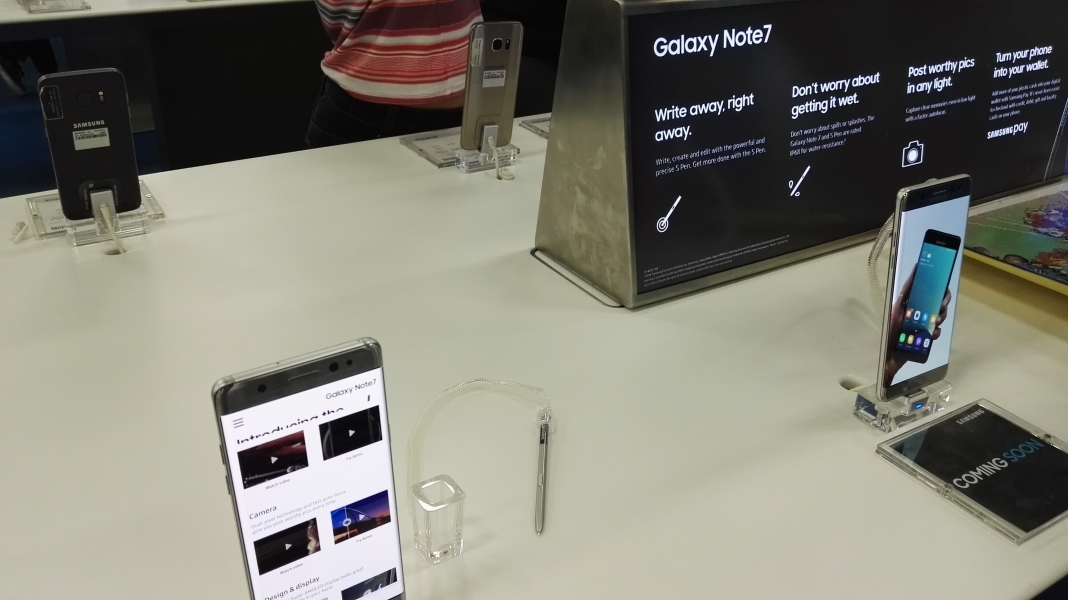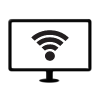Chargers and Power Banks
Headphone & Speakers
Cases & Covers
Virtual Reality
Cables & Adapters
Media Player
Laptop
Tablet
Desktop
Cell Phone
Printers & Copiers
Memory Cards
TV
Computer Display
Game Console
Smart Home
Wearable Technology
Photo & Video Camera
Car Electronics
Car
Networking Equipment
Smart Toys
Home Audio & Video
Professional & Industrial
Storage Drive
Docking Station
Game Console Controllers
Set-top box
Keyboard, Mice, & Stylus
Portable Music Player
Computer Parts & Components
Cordless & Speakerphones
Projector
Software
Reporting
Galaxy Note 7
by Samsung



Interested in this product?
Galaxy Note7- The First Samsung Smart Phone with USB Type-C Goes Through Battery Fire Recall Fiasco
Given that most Android phone makers have already adopted USB Type-C on their flagship phones, Samsung has been one of the last (and arguably most important) hold outs. Perhaps Samsung wanted to see how USB Power Delivery and Qualcomm Quick Charge technologies would shake.
However, similar to Huawei with the Huawei P9, another important factor is that Samsung uses its own processor chips. This makes it more difficult for Samsung to use technologies like Qualcomm Quick Charge since not all phones may be based on Qualcomm's Snapdragon processors.
As a result with the Samsung Galaxy Note7, Samsung does not use Qualcomm Quick Charge technology unlike most other USB Type-C based Android phones. It also doesn't appear to support USB Power Delivery. However, Samsung does appear to use its own Adaptive Fast Charging technology over USB Type-C given that its upcoming Adaptive Fast Charging Dual-Port Vehicle Charger also has a USB Type-C cable. Similar to Qualcomm Quick Charge technology, these proprietary methods are not allowed as per the USB specification.
Samsung doesn't really promote fast charging with the Galaxy Note7, and seems to be more aggressive in promoting its Qi based wireless charging technology (though Adaptive Fast Charging through the USB Type-C port should be faster).
Unlike the Samsung Note5 which was similar to the Samsung Galaxy S6 in its loss of the SD card slot, the Note7 has brought back the SD card like the Galaxy S7. This is probably due to a lot of negative consumer feedback on not being able to upgrade memory on their Samsung phones which had been a differentiator vs iPhones.
Samsung has also brought back USB 3.1 Gen 1 (5 Gb/s) speeds back to its phones with the Galaxy Note7. Although making a brief appearance on the Galaxy S5 with a SuperSpeed USB micro-B connector that admittedly looked ugly on the smartphone, the Samsung Galaxy S6 went back to USB 2.0 speeds with a more traditional high speed USB micro-B connector.
One of the promises of the new USB Type-C connector has been to allow gigabit link speeds in mobile devices, but adoption of USB 3.1 Gen 1 (5 Gb/s) has been rapid in notebooks while much slower in smartphones. To date, the Lumia 950, HTC 10, Lenovo's ZUK Z1, Zuk Z2 Pro, and Moto Z Droid fully support USB 3.1 (note the LG G5 supports USB 3.1 Gen 1 only when the phone is device and not a host) but most other USB Type-C phones have only supported USB 2.0. Finally, with the Galaxy Note7, Samsung has not only brought USB Type-C to a wide global audience, but is finally fulfilling the promise of bringing USB 3.1 Gen 1 to one of the most advertised phones out there.
Just watching the 2016 Summer Olympics, it's hard to escape the onslaught of advertising for the Galaxy Note7 (which is being released during these games).

Even though the product hasn't yet been released, Samsung has also done a good job at pre-promoting the Galaxy Note7 at retail channels like Best Buy.

Unfortunately, soon after the Samsung Galaxy Note7 was released, a small number of users reported the battery and phone catching on fire with Samsung now recalling all phones. We know that rapid charging can make phones and it will be interesting to see what might be the root cause of Samsung's current woes.
View Full Article
Featured Products
 GTrusted
GTrusted


































